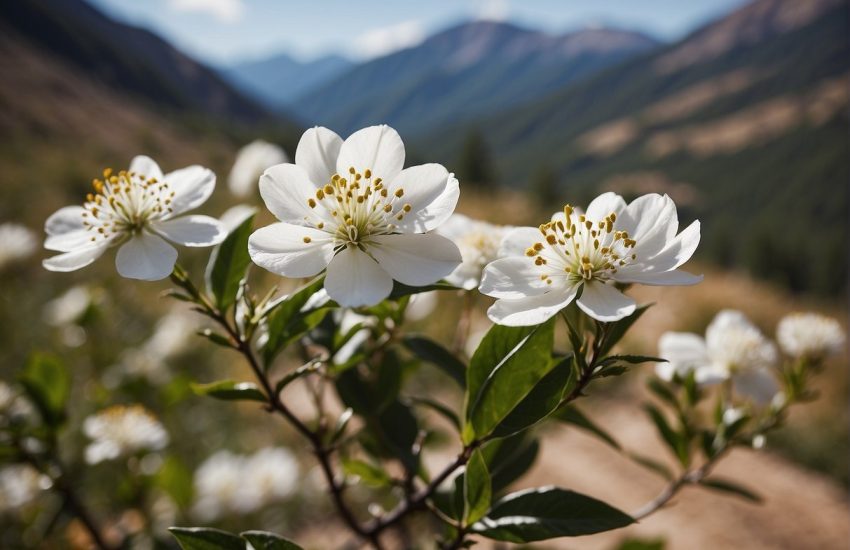Pink Flower Tree Texas: A Guide to the Best Varieties for Your Garden
Texas is home to a variety of beautiful flowering trees that add color and vibrancy to the landscape. Among these, pink flowering trees are particularly popular for their striking appearance and ability to attract pollinators. Whether you’re looking to add a pop of color to your garden or enhance your landscaping, pink flowering trees in Texas are an excellent choice.

There are several types of pink flowering trees that thrive in Texas, including the American Smoke Tree, Narrowleaf Crabapple, and Texas Redbud. These trees are known for their stunning pink blooms, which typically appear in the spring or summer months. They can be used as specimen trees, planted in groups for a dramatic effect, or incorporated into a larger landscaping design.
In addition to their aesthetic appeal, pink flowering trees in Texas also offer several benefits for the environment. They provide food and habitat for pollinators such as bees and butterflies, and can help improve air quality by filtering pollutants. Whether you’re an avid gardener or simply looking to enhance your outdoor space, pink flowering trees in Texas are a beautiful and beneficial addition to any landscape.
Flowering Trees Native to Texas
Texas is home to a variety of beautiful pink flowering trees, many of which are native to the state. These trees not only add color to the landscape but also provide habitat for wildlife and contribute to the overall health of the ecosystem.
Texas Redbud Varieties
The Texas Redbud (Cercis canadensis var. texensis) is a popular native tree that is known for its stunning pink flowers that bloom in early spring. It is similar to the Eastern Redbud but has slightly larger leaves and flowers. This deciduous ornamental tree can grow up to 20-30 feet tall and wide and prefers well-drained soils. There are several varieties of Texas Redbud, including the ‘Oklahoma’ and ‘Forest Pansy’ cultivars, which have purple foliage.
Magnolia Trees in Texas
Another notable pink bloomer in Texas is the Magnolia tree. The Southern Magnolia (Magnolia grandiflora) is a large evergreen tree that produces fragrant white flowers with pink and purple undertones. It is a popular ornamental tree in the southern United States and can grow up to 80 feet tall. The deciduous Magnolia stellata, commonly known as the Star Magnolia, produces pinkish-white flowers in early spring and is a smaller tree, growing up to 15 feet tall.
Other Notable Pink Bloomers
In addition to the Texas Redbud and Magnolia trees, there are several other pink flowering trees that are native to Texas. The Desert Willow (Chilopsis linearis) is a drought-tolerant tree that produces hazy pink flowers in spring and summer. The Texas Mountain Laurel (Sophora secundiflora) is an evergreen tree that produces clusters of fragrant purple-pink flowers in early spring. The Crabapple tree (Prunus mexicana) is a small deciduous tree that produces pink flowers in early spring and is a popular ornamental tree in Texas.
Overall, Texas is home to a variety of beautiful pink flowering trees that add color and vibrancy to the landscape. Whether you are looking for a large ornamental tree or a smaller tree for your garden, there are plenty of options to choose from.
Cultivation and Care
Soil and Sunlight Requirements
The Texas tree with pink flowers thrives in well-draining soils with a pH of 6.5 to 7.5. It is a deciduous tree, meaning that it sheds its leaves in the fall and grows new ones in the spring. This seasonal change can add a beautiful touch to any landscape. The tree prefers full sun to partial shade, making it an ideal choice for landscaping in Texas.
When planting the tree, it is important to consider the local climate and USDA hardiness zones. The Texas tree with pink flowers is drought-tolerant and can withstand hot summers. However, it is important to ensure that the soil is moist but not waterlogged. Consider planting low-growing groundcovers around the base of the tree to help retain moisture in the soil.
Watering and Maintenance
The Texas tree with pink flowers requires regular watering, especially during the first few years after planting. Once established, it is a relatively low-maintenance tree that requires little attention. However, pruning may be necessary to maintain its shape and size. Prune the tree in late winter or early spring before new growth appears.
In terms of soil type, the Texas tree with pink flowers can adapt to a variety of soil types, including clay, loam, and sandy soils. However, it is important to ensure that the soil is well-draining to prevent waterlogging.
Overall, the Texas tree with pink flowers is a beautiful addition to any landscape in Texas. With proper care and maintenance, it can thrive in a variety of soil and sunlight conditions.


